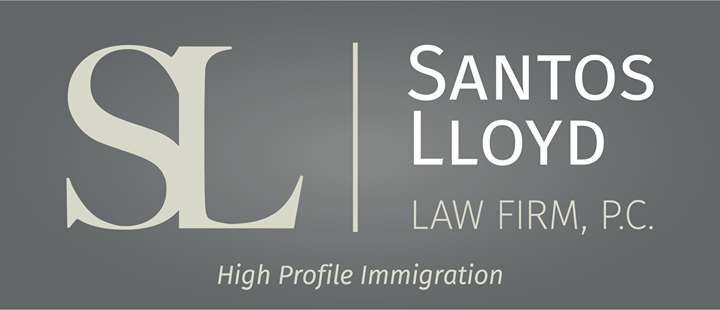Descripción general del proceso EB-5
Kyle Huffman • April 25, 2024
Click here to read this article in English
Embarcarse en el viaje de inmigración EB-5 es tanto un profundo esfuerzo personal como una decisión estratégica de inversión. Para las personas que buscan hacer de los Estados Unidos su nuevo hogar al tiempo que contribuyen a su panorama económico, el Programa EB-5 para Inmigrantes Inversores ofrece una vía como ninguna otra. Este programa, establecido por el gobierno estadounidense en 1990, ofrece a los inversores extranjeros la oportunidad de obtener la residencia permanente en Estados Unidos invirtiendo en empresas creadoras de empleo. Sin embargo, navegar por las complejidades del proceso EB-5 requiere un conocimiento profundo de sus complejidades, requisitos y posibles escollos. En esta guía, ofrecemos una breve descripción general de los pasos y documentos que intervienen en el proceso de inmigración EB-5, arrojando luz sobre sus componentes clave, los criterios de elegibilidad, las opciones de inversión y los pasos del procedimiento, dotando a los posibles inversores de los conocimientos necesarios para embarcarse en este viaje transformador con confianza.
Antes de seleccionar un proyecto y realizar la inversión, es importante que un inversor EB-5 consulte con una firma jurídica de inmigración para elaborar una estrategia para la solicitud. Es necesario demostrar al Servicio de Inmigración (USCIS) que todos los fondos utilizados en la inversión se obtuvieron y retuvieron legalmente, por lo que su abogado querrá saber de dónde procede el dinero para la inversión y dónde se ha retenido desde que se obtuvo.
Una vez satisfecho con la procedencia y el rastreo de los fondos, el inversor puede seleccionar un proyecto en el que invertir. Tras la aprobación de la Ley de Reforma e Integridad del EB-5, algunos proyectos de inversión ya han sido preaprobados por USCIS mediante la presentación del formulario I-956 y la designación como Centro Regional de Inversión. Por defecto, la inversión mínima requerida es de 1.050.000 dólares; sin embargo, esta cantidad se reduce a 800.000 dólares para los centros de inversión situados en "zonas de empleo específicas".
Después de presentar la inversión al centro regional, el inversor trabajará con su abogado para crear la petición I-526. En esta etapa del caso, es el momento de mostrar USCIS la fuente y el rastreo de todos los fondos utilizados para la inversión. Los tipos de documentación necesarios para demostrar el origen lícito y el rastreo de los fondos son extremadamente amplios y dependen en gran medida de la procedencia del dinero en cada caso particular, pero los documentos más comunes incluyen formularios de impuestos W-2 o 1099, declaraciones de impuestos federales y estatales, extractos de cuentas bancarias, contratos de compraventa de bienes inmuebles, certificados de acciones, contratos de préstamo, documentos de herencia y registros de transferencias bancarias, entre otras muchas posibilidades.
Los solicitantes del EB-5 pueden tramitar su Green Card
a través de USCIS presentando una solicitud I-485 de Ajuste de Estatus, o bien tramitarla a través del consulado de su país de origen. Si ya se encuentra en los Estados Unidos con otro estatus válido, la solicitud de Ajuste de Estatus puede presentarse simultáneamente con la petición I-526. Si se tramita a través de un consulado en el extranjero, el inversor tendrá que esperar hasta que se apruebe la I-526 antes de iniciar el proceso consular. El solicitante principal, junto con su cónyuge y sus hijos solteros menores de 21 años pueden obtener la residencia permanente a través del proceso EB-5.
Al término de cualquiera de los dos procesos, ya sea solicitando la Green Card dentro de los Estados Unidos o buscando la entrada a través de un consulado, USCIS emitirá Green Cards condicionales, con una validez de dos años. En los últimos tres meses antes de que expire la Green Card condicional, el inversor y su familia tendrán que presentar una solicitud I-829 para la eliminación de las condiciones de la tarjeta verde. En esta fase, casi dos años después de realizada la inversión, USCIS confirma si la inversión se mantiene en el proyecto y se han creado los 10 puestos de trabajo requeridos. Tras la aprobación del formulario I-829, el inversor y su familia recibirán la Green Card permanente, con una validez de 10 años.
El inversor y su familia podrán solicitar la nacionalidad estadounidense cinco años después de la expedición de la tarjeta de residencia inicial. La Green Card condicional cuenta a estos efectos, por lo que la ciudadanía será una posibilidad aproximadamente 3 años después de que se expidan las Green Cards permanentes.
En conclusión, el Programa EB-5 para Inmigrantes Inversores constituye una vía única para que personas de todo el mundo hagan realidad sus aspiraciones de vivir y prosperar en Estados Unidos. Mediante la inversión estratégica y la dedicación a la creación de empleo, los participantes no sólo obtienen la residencia permanente, sino que también contribuyen al crecimiento económico y la prosperidad del país. Sin embargo, es crucial que los futuros inversores aborden el proceso EB-5 con una planificación meticulosa, una investigación exhaustiva y una orientación experta para sortear con éxito sus complejidades. Al comprender los requisitos del programa, explorar las opciones de inversión y cumplir las directrices de procedimiento, los aspirantes a inmigrantes pueden embarcarse en su viaje EB-5 con claridad y confianza. En última instancia, el programa EB-5 representa algo más que una vía para obtener la residencia: encarna el espíritu emprendedor, la innovación y la oportunidad que definen el sueño americano.
Si usted cree que puede calificar para el programa EB-5 o si tiene alguna pregunta, por favor programe una consulta con uno de nuestros abogados expertos y estaremos más que encantados de ayudarle.
Este blog no pretende ser un consejo legal y nada aquí debe interpretarse como el establecimiento de una relación abogado-cliente. Por favor, programe una consulta con un abogado de inmigración antes de actuar sobre cualquier información leída aquí.

Once you have connected with a college program, have been admitted to the school, and deemed eligible to compete athletically, you will need to secure an F-1 student visa in order to actually attend your new college and begin your time as a student athlete. The first step in the visa process is to receive your Form I-2

For many talented athletes around the world, U.S. college athletics represent a remarkable opportunity to combine elite athletic competition with higher education. In sports such as basketball, soccer, track and field, and tennis, among others, hundreds of colleges and universities across the United States offer struct

Under the new regulation, if a person filed or files Form I-589, Application for Asylum and for Withholding of Removal after October 1, 2024, and the application remains pending with USCIS for 365 days, the applicant must pay an Annual Asylum Fee (AAF) on the one-year anniversary of his or her filing date.



